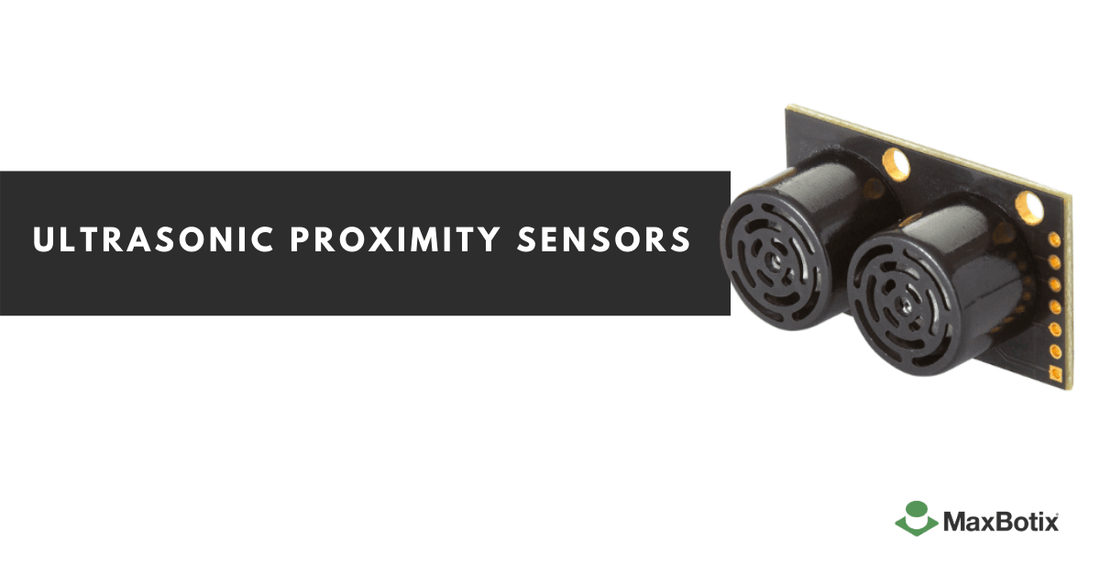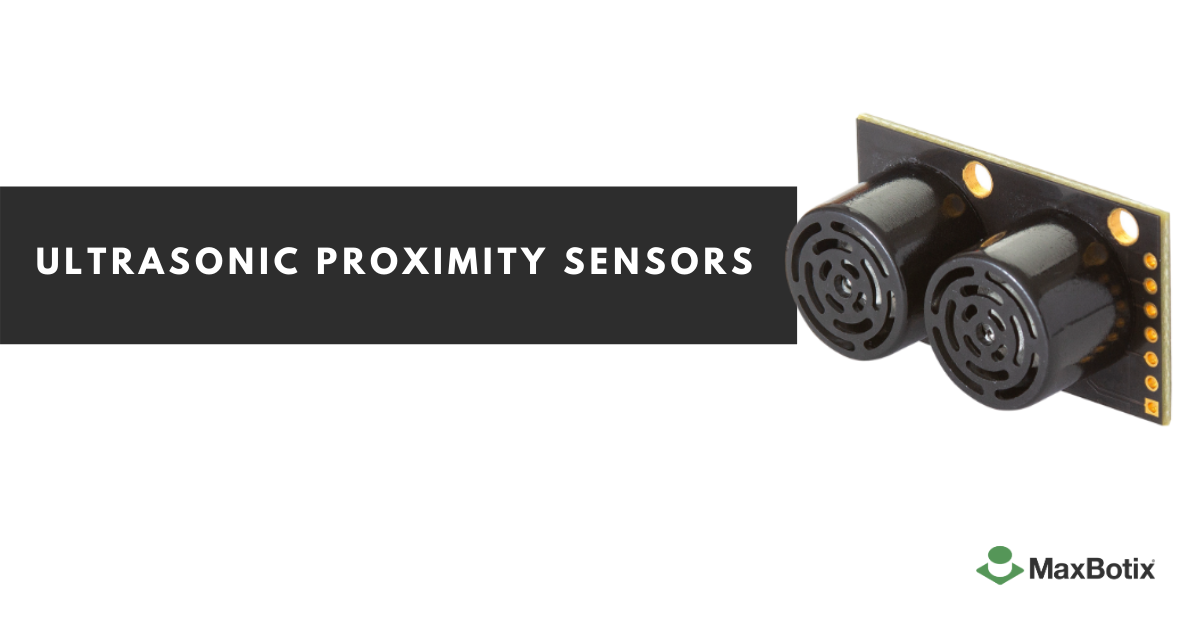What are Ultrasonic Proximity Sensors
Ultrasonic sensors are often used for obstacle avoidance, distance measurement, and autonomous navigation. These sensors are essential for effective proximity detection in various applications.While they are commonly used for hobby robotics applications, you’ll also find them used in automation and manufacturing use cases.Most of our sensors are built with the transmitter and receiver in the same housing. We also provide a unit which uses two transducers for applications needing to detect shorter ranges.To avoid interference, we provide narrow beam sensors for sensors that require detection in a tight area.Our technical support team can make sensor recommendations based on your application environment, how many sensors you’ll be interfacing, and other factors which may affect your successful integration of our sensors.How do Ultrasonic Proximity Sensors Work?
Ultrasonic proximity sensors work by first emitting the sonic waves from the transducer. Once those waves are sent from the transducer, the waves bounce off of the target object, and then are returned to the sensor.The time it takes to send and receive the sound waves are used to determine the proximity or distance the sensor is from the target object. This process is fundamental in understanding how a proximity detection sensor functions.Many product developers will choose to use ultrasonic based sensors because they are not affected by the target color, dust, light, and other environmental factors.Liquids, solids, and grain (as in grain bins for farms) are often detected using ultrasonic sensors.These sensors are built for non-contact object detection, which makes them easier to use for longer periods of time.How to Choose the Right Ultrasonic Proximity Sensor
The sensor you choose strongly depends on your use case and the required proximity sensor range.A few things that will help us help you find the right sensor solution for your application:What is Your Sensor Environment?
Our sensor solutions are classified as protected and exposed for “indoor” or “outdoor” use.Note*: Our WR sensors are commonly used as an ideal solution for applications where condensation and other environmental factors are present. Their narrow beam properties can also work well in some indoor applications.Generally, our sensors are ideal for detecting the distance to objects, which is a crucial application of ultrasonic sensors.Will You Use the Sensor in Chemical Environments?
If you need a sensor that will be used in an application where chemicals are present, you'll need added protection.If you need that additional protection, you should consider adding our F-Option and P-Options to add a chemically inert seal and to add a parylene coating to cover the transducers face to combat corrosion.In similar environments, you may want to also protect your pinout. For this, we provide the cable attach which will make your sensor completely IP67 rated. (It comes with 3 ft. of cable, but you can order additional if needed).Other Necessary Factors
These other items will also help us choose which sensor solution would be right for your project.Outputs, We offer: * Analog envelope * Analog Voltage * I2C * Pulse Width * RS232 * TTLThe Housing Style
Your sensor environment will help us choose the right choice for your application. You would choose a different sensor for a kiosk than you would to detect in a cargo trailer.Filtering:
Do you need any special considerations for your environment?Our filters will solve common problems like: * Corrugated walls in a tank - the Most Likely Filter will search for the largest acoustic return instead of the closest. * Condensation on the sensors' face - The Self-Cleaning feature will allow the sensor to reduce the impact of condensation or high moisture environments with a built-in feature to heat the transducers' face. * Be able to take an average reading in an uneven grain bin - Our Stability Filter will take 3 readings of the first detectable target to report the best and most accurate measurement. Proximity Sensor Sensing Range Our sensors have different ranges that can serve your different use cases. Understanding the range of proximity sensor options available can help you make an informed decision. If you review our sensor selection filter, you'll be able to choose your sensor based on the range you require.When determining your sensing range, you'll likely have to review our resource about Reading MaxSonar Beam Patterns to understand how to select the sensor for your particular application, as detection zones vary sensor to sensor.MaxSonar Ultrasonic Proximity Sensors Product Overview
MB7052 XL-MaxSonar-WRM1Features:- Weather Resistant - WR sensors have an IP67 Protection Rating for water intrusion.
- Most Likely Filter - This sensor prioritizes large targets over small targets and noise.By using this technology, you'll receive the range to the target with the largest return of sound seen by the sensor.It will often be the largest target in an environment.
- Stability Filter - The sensor will take 3 readings to provide a valid range reading, as long as the readings are within 1 cm of each other.This will provide a more accurate measurement.
- Serial Data - RS232
- Pulse-width
- Analog Voltage
- P-Option - A parylene coating is added to the face of the aluminum transducer.Why get the P-Option?If your sensor is in an environment where the aluminum transducer may be affected by chemicals in the environment, this option will protect it from many chemicals and liquids, review our Chemical Compatibility Chart
- F-Option - A fluorosilicone seal is added around the transducer. Why get the F-Option?Extremely corrosive gases and liquids can compromise how well your sensor unit will operate.This chemically inert seal will also improve sensor performance in wet or dusty environments.
- Shielded Cable Attach - 3ft of attached wire.Why get the Shielded Cable Attach? For simple integration into your end-user application.Create an ultrasonic proximity sensor with an IP67 protection rating by fully protecting your pin-out.Avoid having to solder this sensor and order it ready to integrate.
- High sensitivity and wide beam detection makes this sensor ideal for a variety of applications including people detection and autonomous navigation.
- Detects smaller objects - This will allow the sensor to work well for in applications where obstacle avoidance is needed.
- Can detect people up to approximately 18 feet - When detecting motion, this is a popular feature when used in displays or security applications.
- Serial Data - RS232
- Pulse-width
- Analog Voltage
Frequently asked questions
Can ultrasonic sensors detect humans?Yes, ultrasonic sensors are an excellent choice for human detection.One of our most popular use cases is the detection of people in front of a kiosk or digital display.You can see how this sensor works in an application for a display.Do ultrasonic sensors work on water?Ultrasonic sensors are often used in level detection applications where water is present.Whether it is detecting flood levels at bridges or detecting the level of water in a tank,ultrasonic sensors can reliably detect surfaces or objects that are not soft.What is a blind zone?A blind zone (also known as a dead zone) in reference to proximity sensors is the zone in front of the transducer's face where objects may not be detected due to close proximity.With the addition of our ShortRange-EZ line of sensors, product developers and engineers are able to detect up to 2cm.Not sure if our sensors would be the right fit for your application?
Review our product catalog and contact our Technical Support Team by clicking the button below to get help selecting a sensor.



